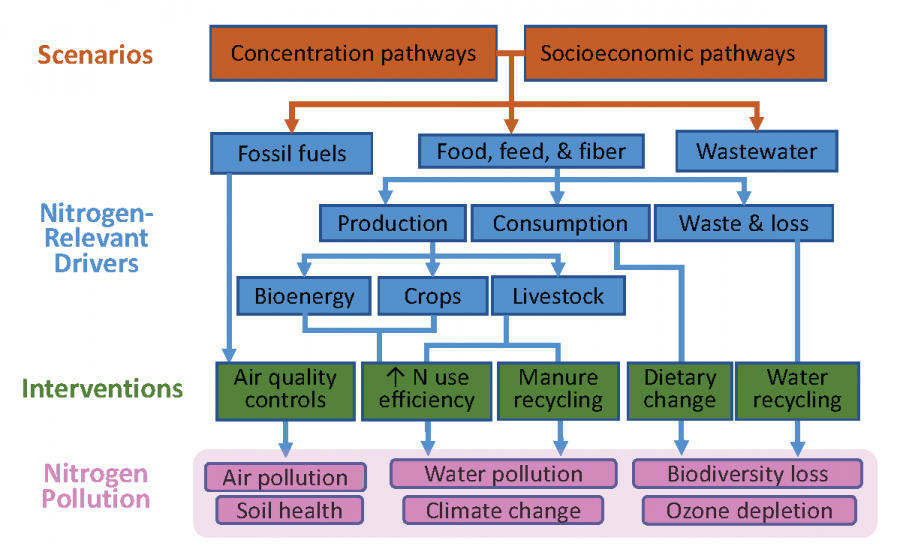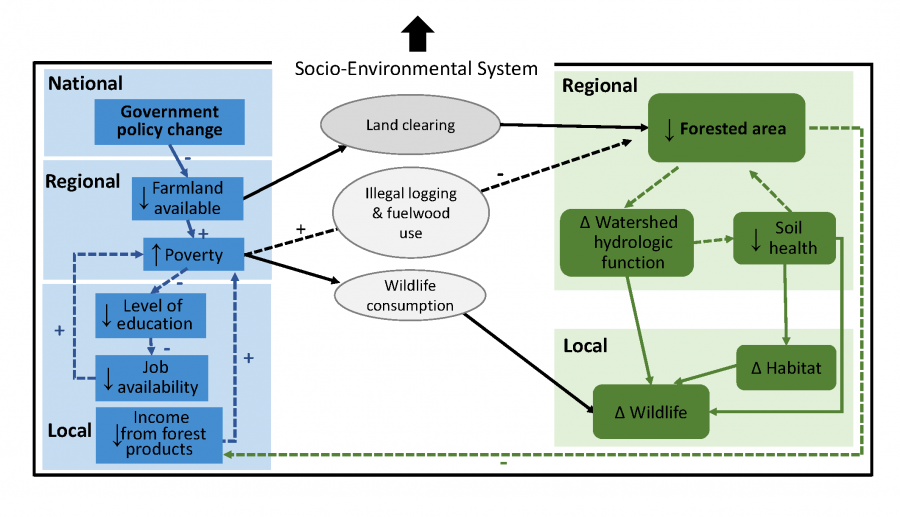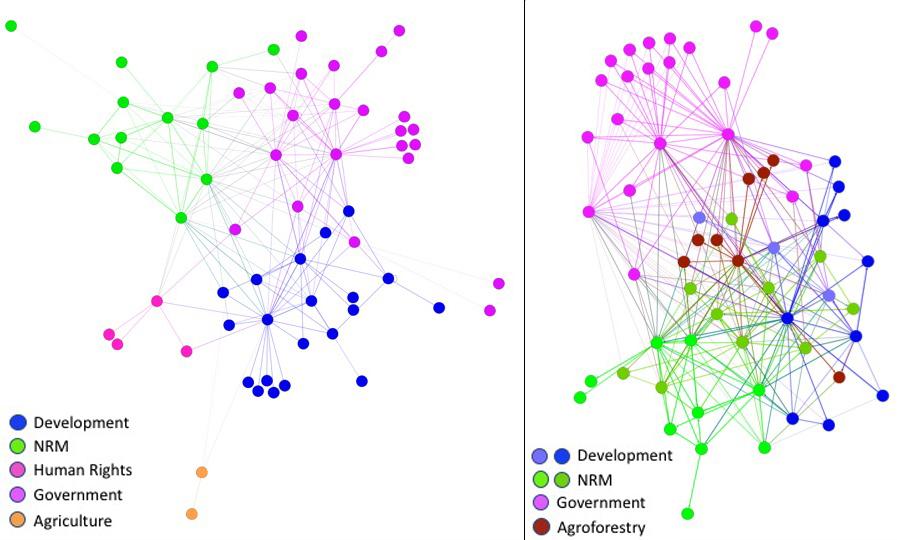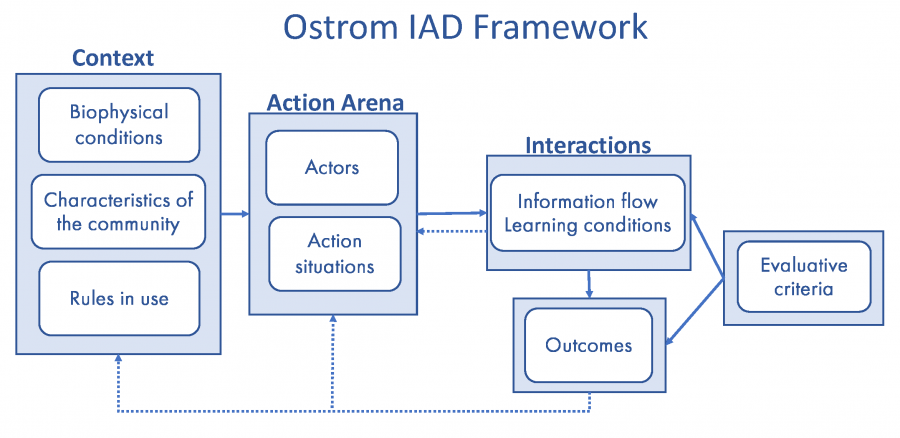
To view in your browser and/or download the article, click on the PDF below.
A socio-environmental (S-E) system refers to a group of humans, social elements, and processes that interact with each other and nature (Figure 1). Sometimes called socio-ecological systems, they are more formally defined as complex systems of tightly linked social and environmental subsystems or component parts. Each subsystem has many components that interact not only with one another but also with other elements across parts of the system and across levels of organization socially, ecologically, temporally, and spatially.
The above schematic is a common way to conceptualize and represent S-E systems, but many others exist. For an overview and other examples, see Chapter 1 in Biggs et al. 2021. These schematics are broadly referred to as frameworks, and they vary depending on the purpose of the research or the management goal that motivates them. S-E frameworks may be in the form of network diagrams if the interest is in understanding relationships between individuals, groups, or institutions—collectively referred to as “agents” by S-E researchers (Figure 2).2 Flowchart-type frameworks are often used when there is interest in developing different scenarios to explore how futures may play out based on different policies or assumptions (Figure 3).3 And of course, a framework’s organization may be designed around social processes. A well known example is Elinor Ostrom’s Institutional Analysis and Development (IAD) framework, which is meant to help understand governance—specifically, how do people interact and create communities, organizations, and rules to sustainably manage resources (Figure 4).4
(Riggs, Langston, & Phann 2020)

(Modified from Kanter et al. 2020)
(McGinnis & Ostrom 2014)
References:
1 Biggs, R., de Vos, A., Preiser, R., Clements, H., Maciejewski, K., & Schlüter, M. (Ed.) (2021). The Routledge Handbook of Research Methods for Social-Ecological Systems. Routledge. https://doi.org/10.4324/9781003021339
2 Riggs, R. A., Langston, J. D., & Phann, S. (2020). Actor network analysis to leverage improvements in conservation and development outcomes in Cambodia. Ecology & Society, 25(4), 28. https://doi.org/10.5751/ES-11854-250428
3 Kanter, D. R., Winiwarter, W., Bodirsky, B. L., Bouwman, L., Boyer, E., Buckle, S., Compton, J.E., Dalgaard, T., de Vries, W., Leclère, D., Leip, A., Müller, C., Popp, A., Raghuram, N., Rao, S., Sutton, M.A.., Tiano, H., Westhoek, H., Zhang, X., & Zurek, M. (2020). A framework for nitrogen futures in the shared socioeconomic pathways. Global Environmental Change, 61, 102029. https://doi.org/10.1016/j.gloenvcha.2019.102029
4 McGinnis, M. D., & Ostrom, E. 2014. Social-ecological system framework: initial changes and continuing challenges. Ecology & Society, 19(2), 30. http://dx.doi.org/10.5751/ES-06387-190230


